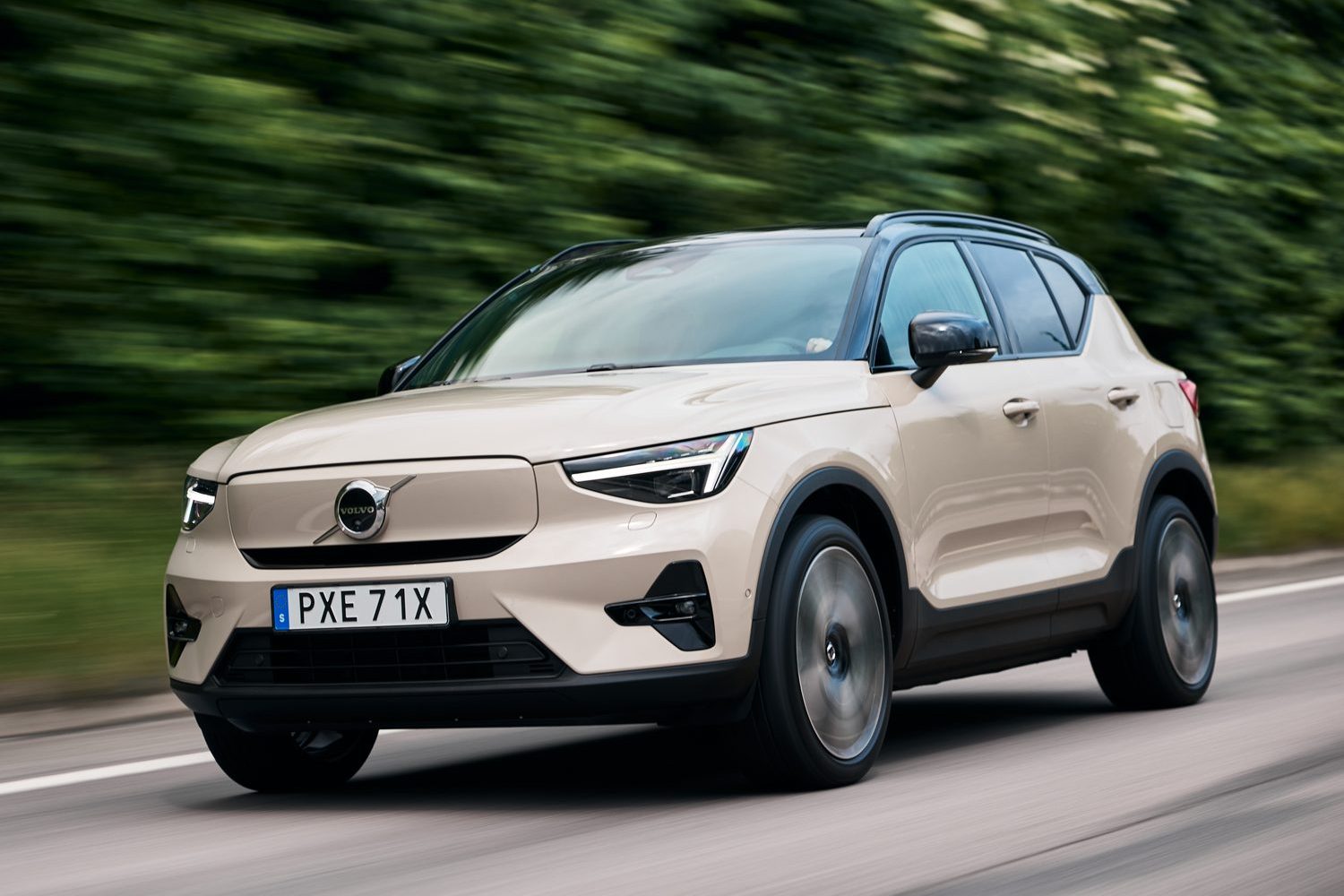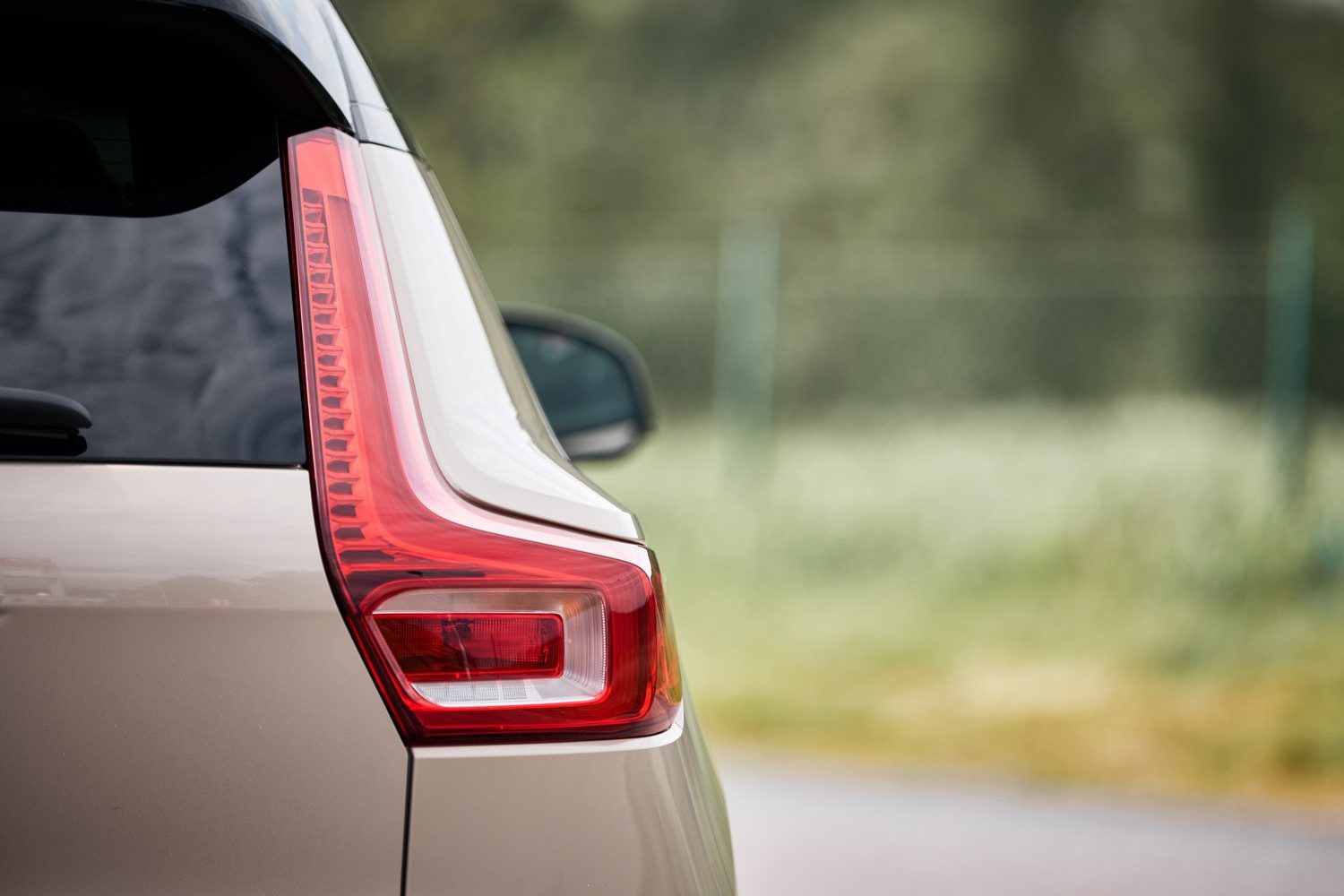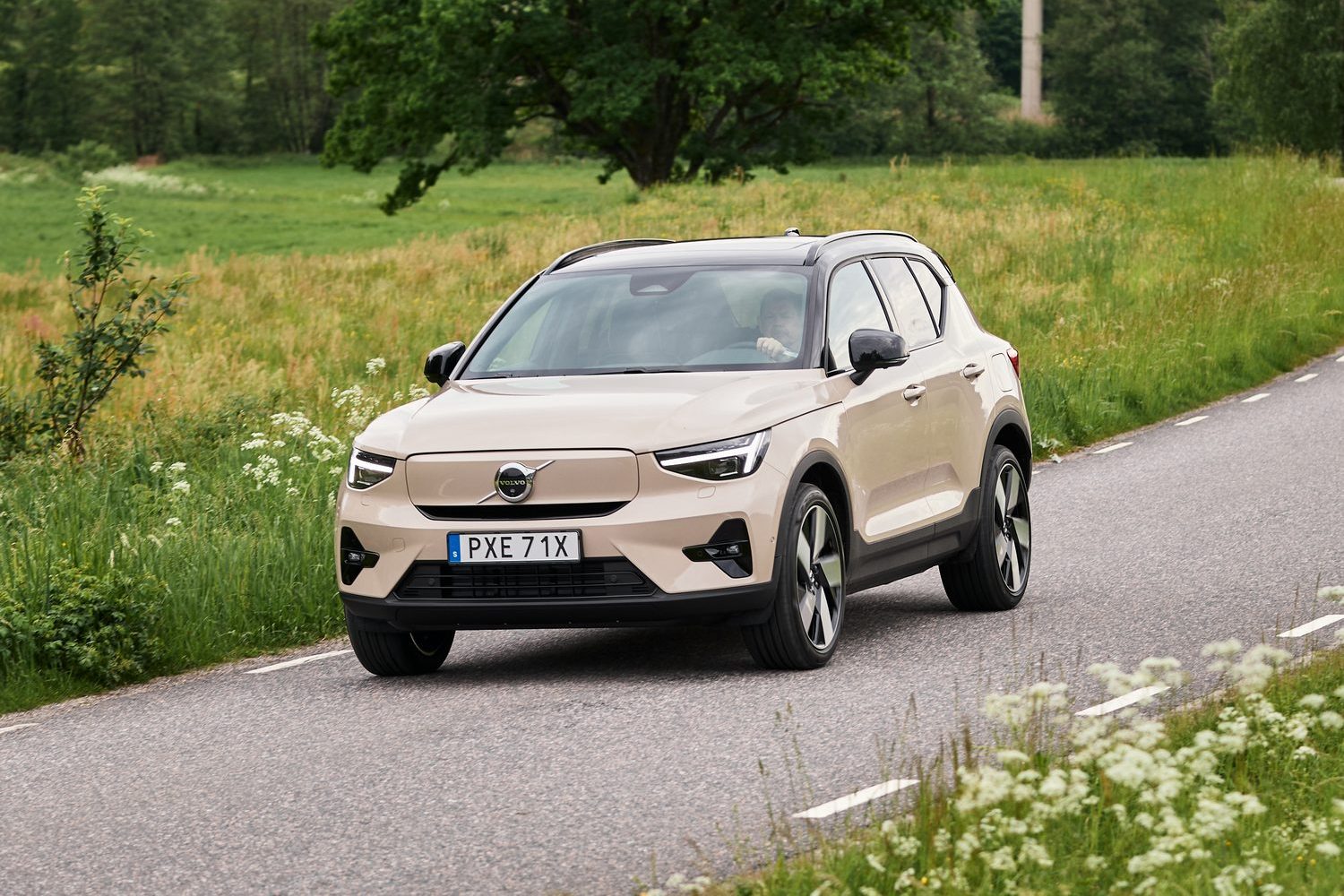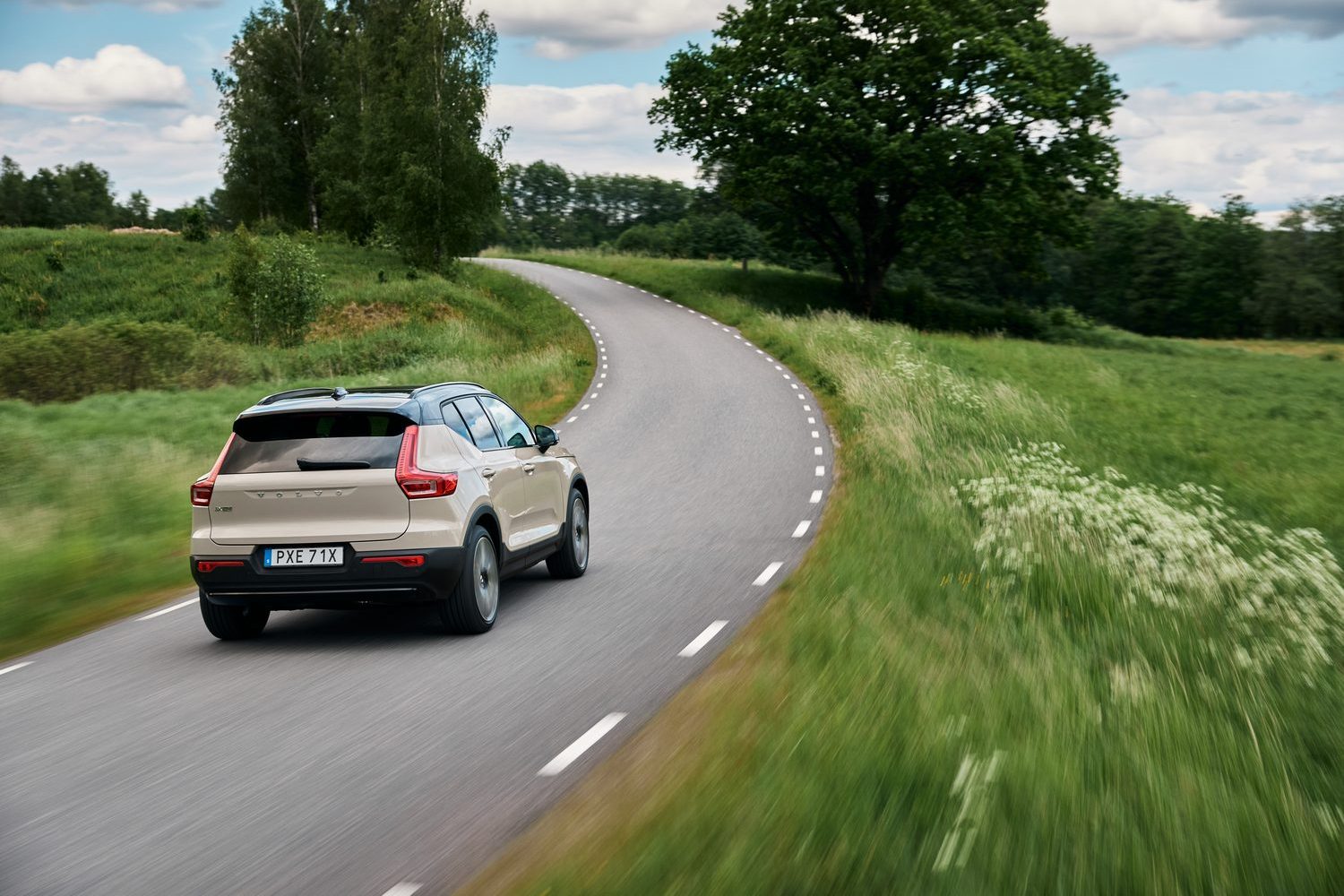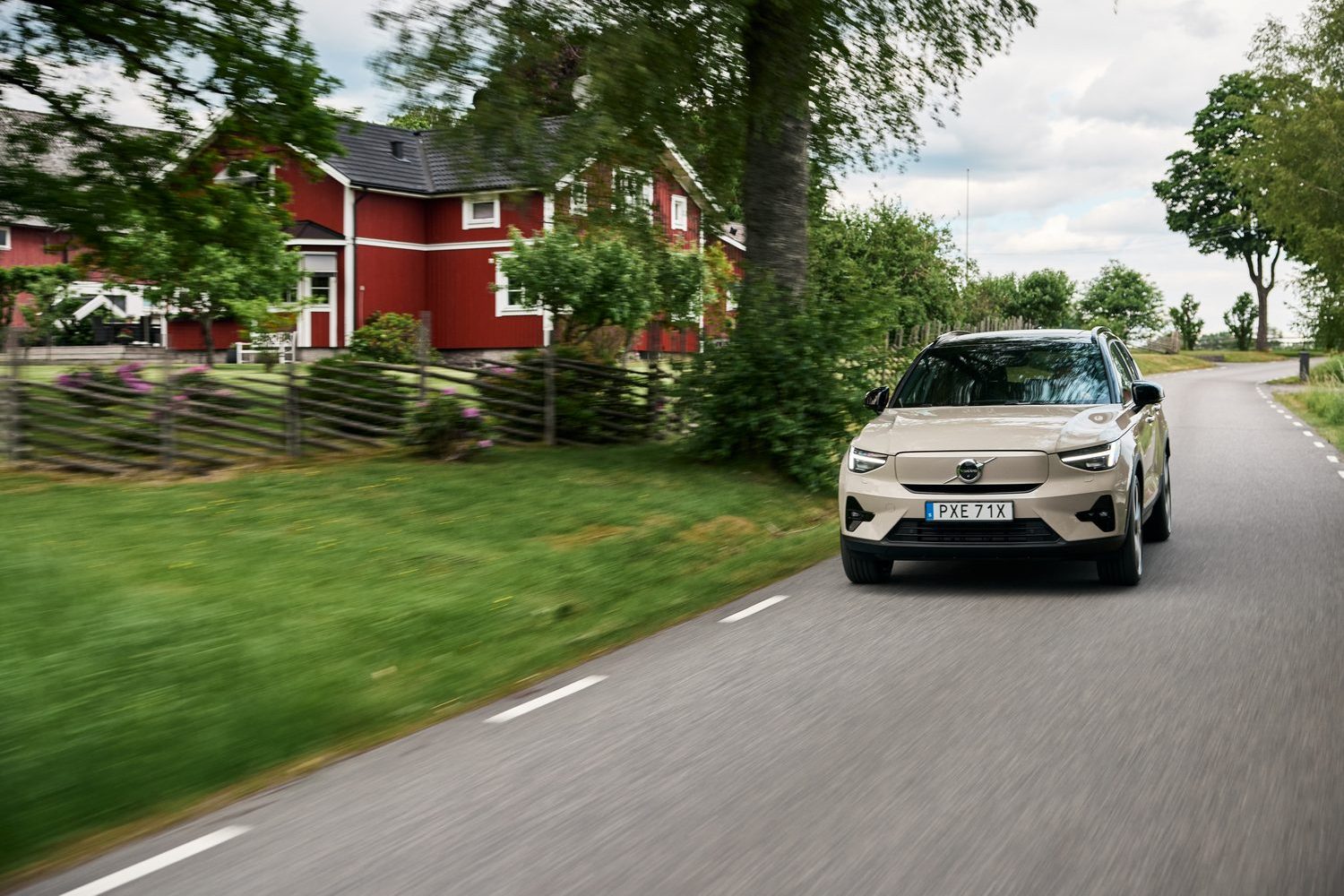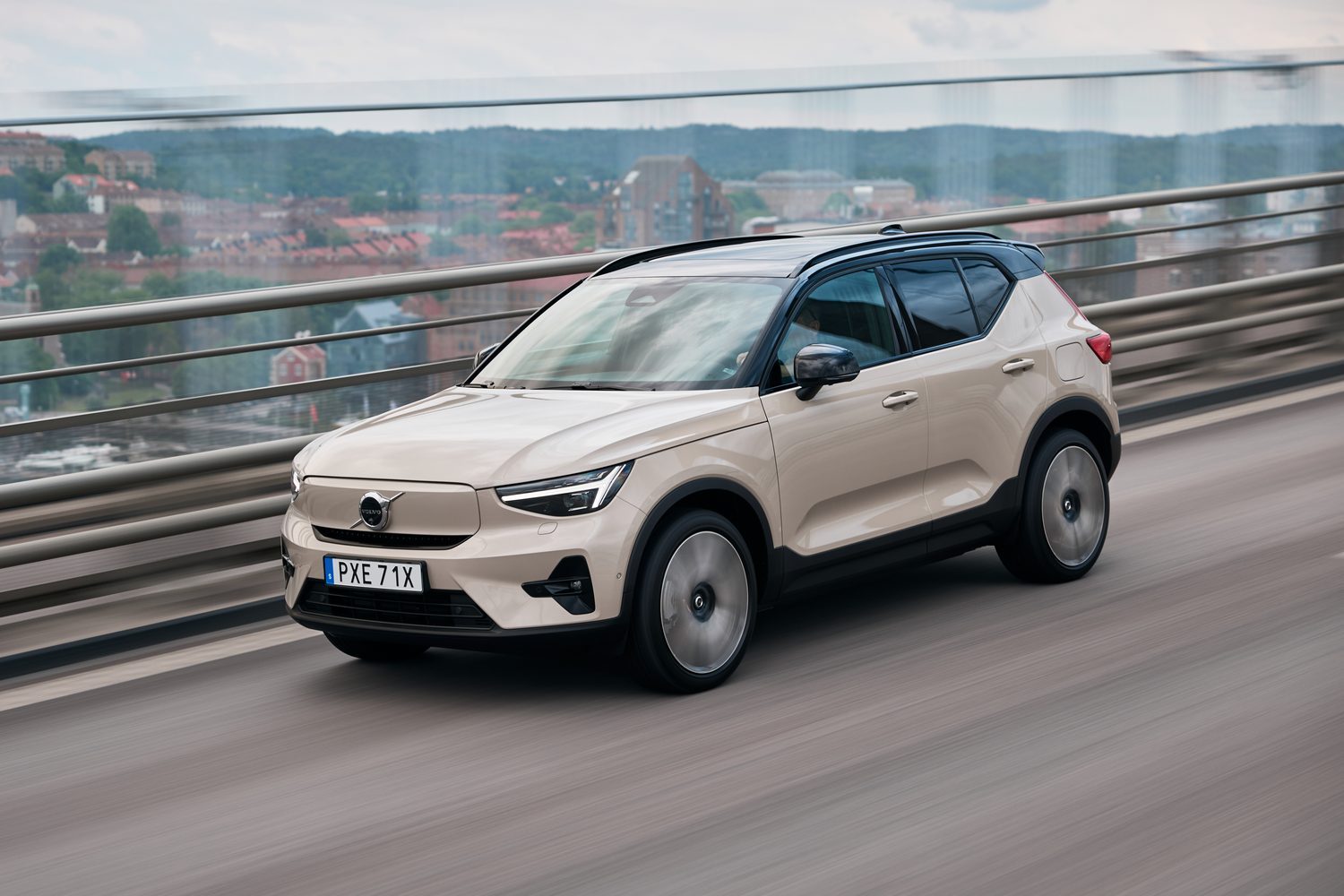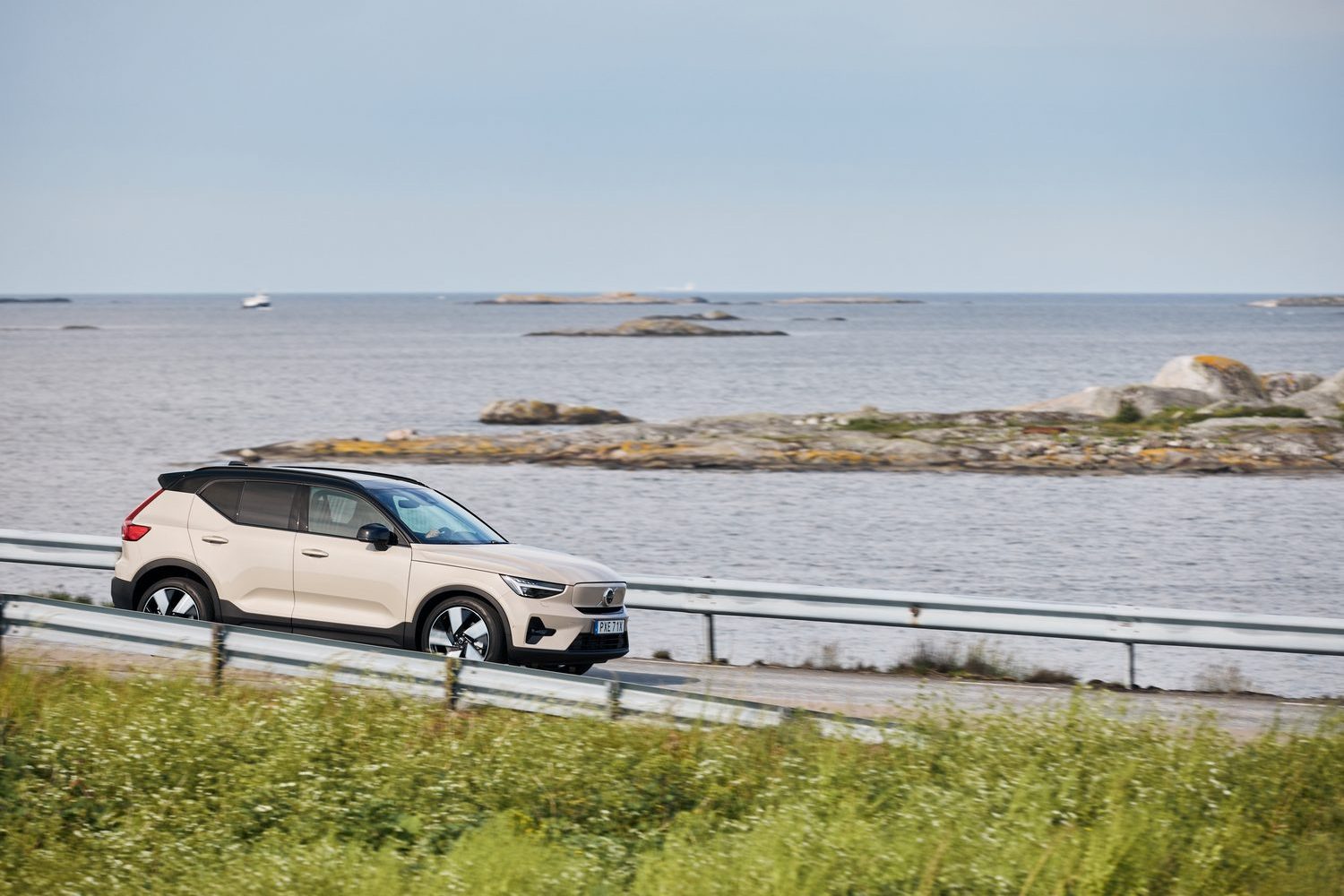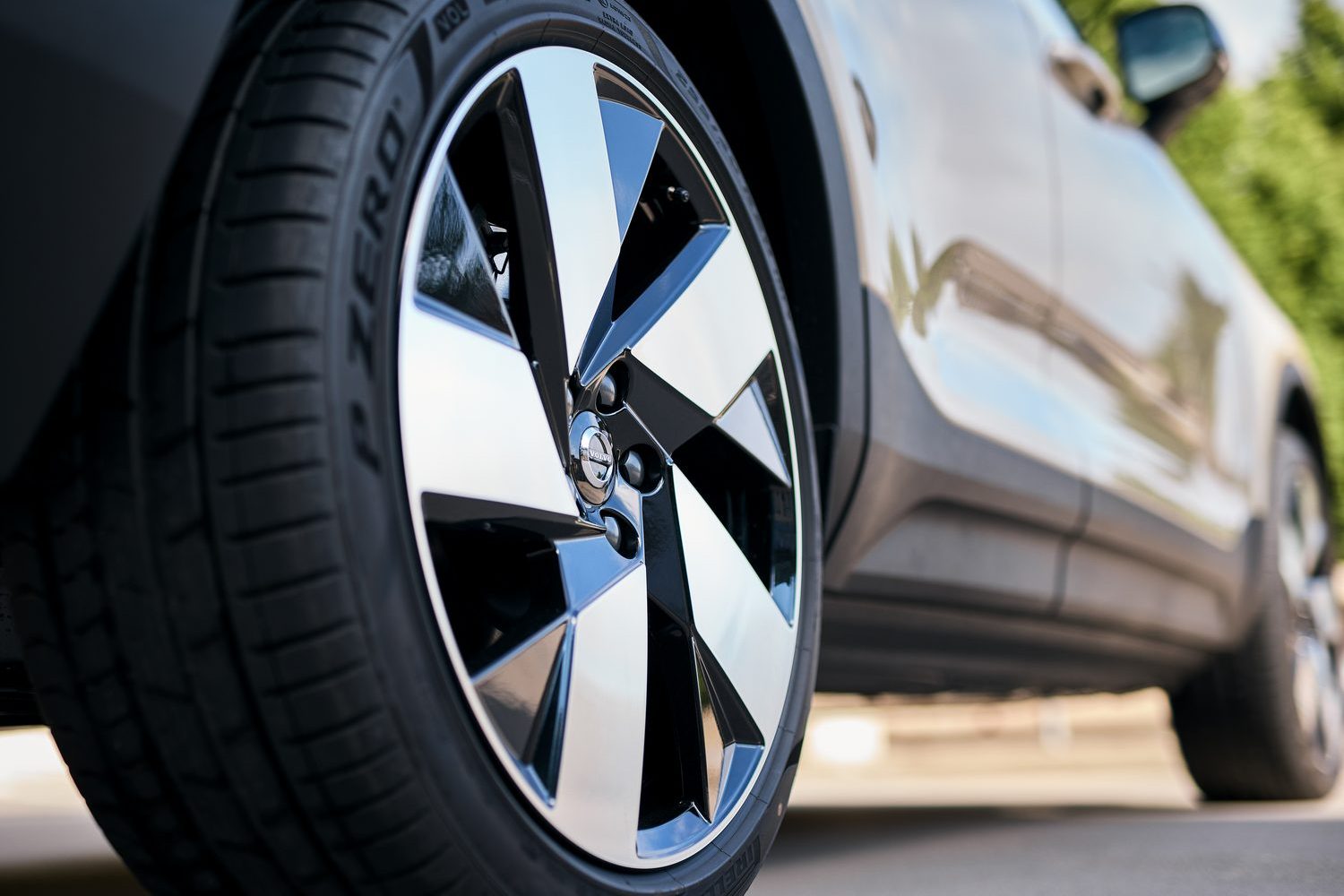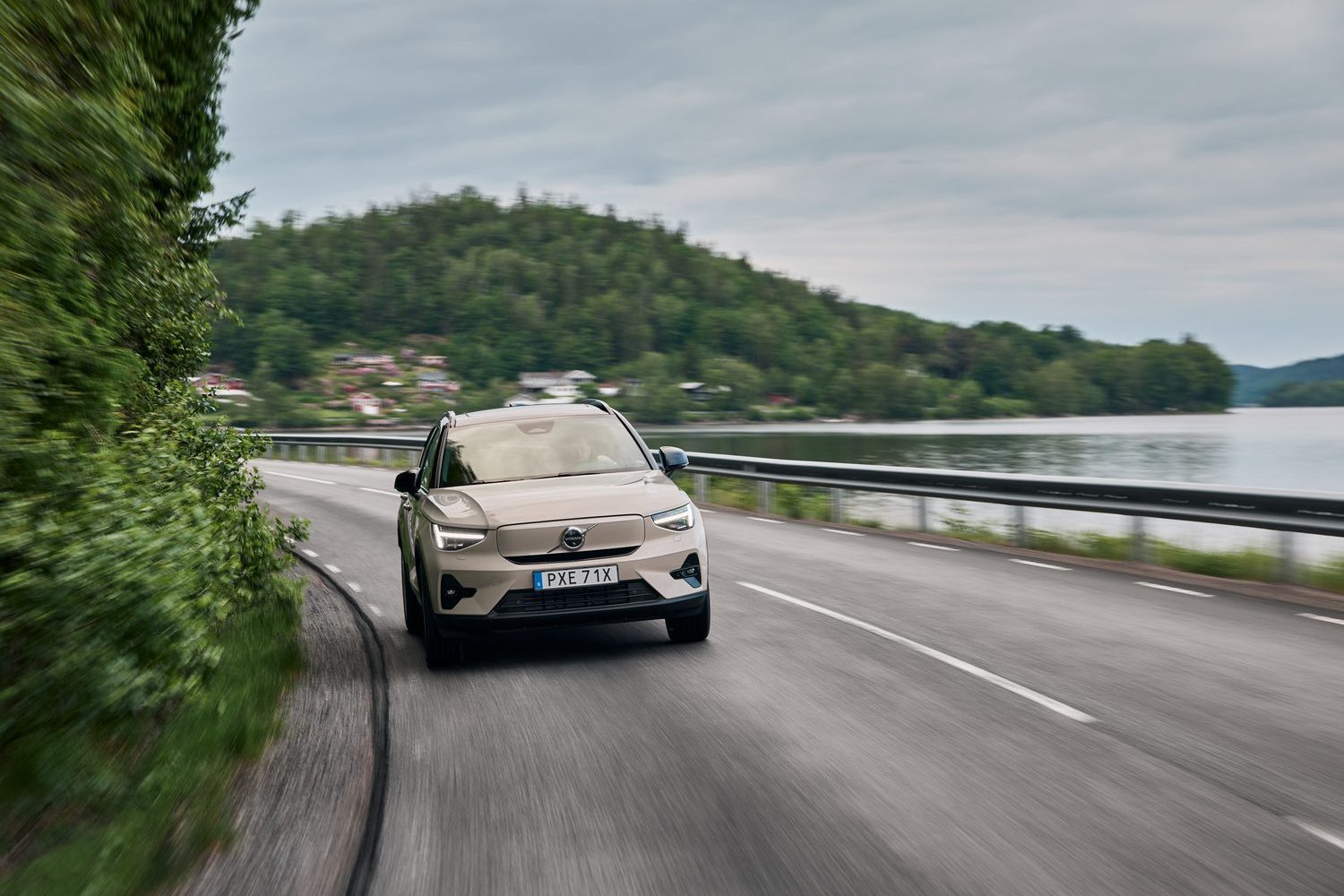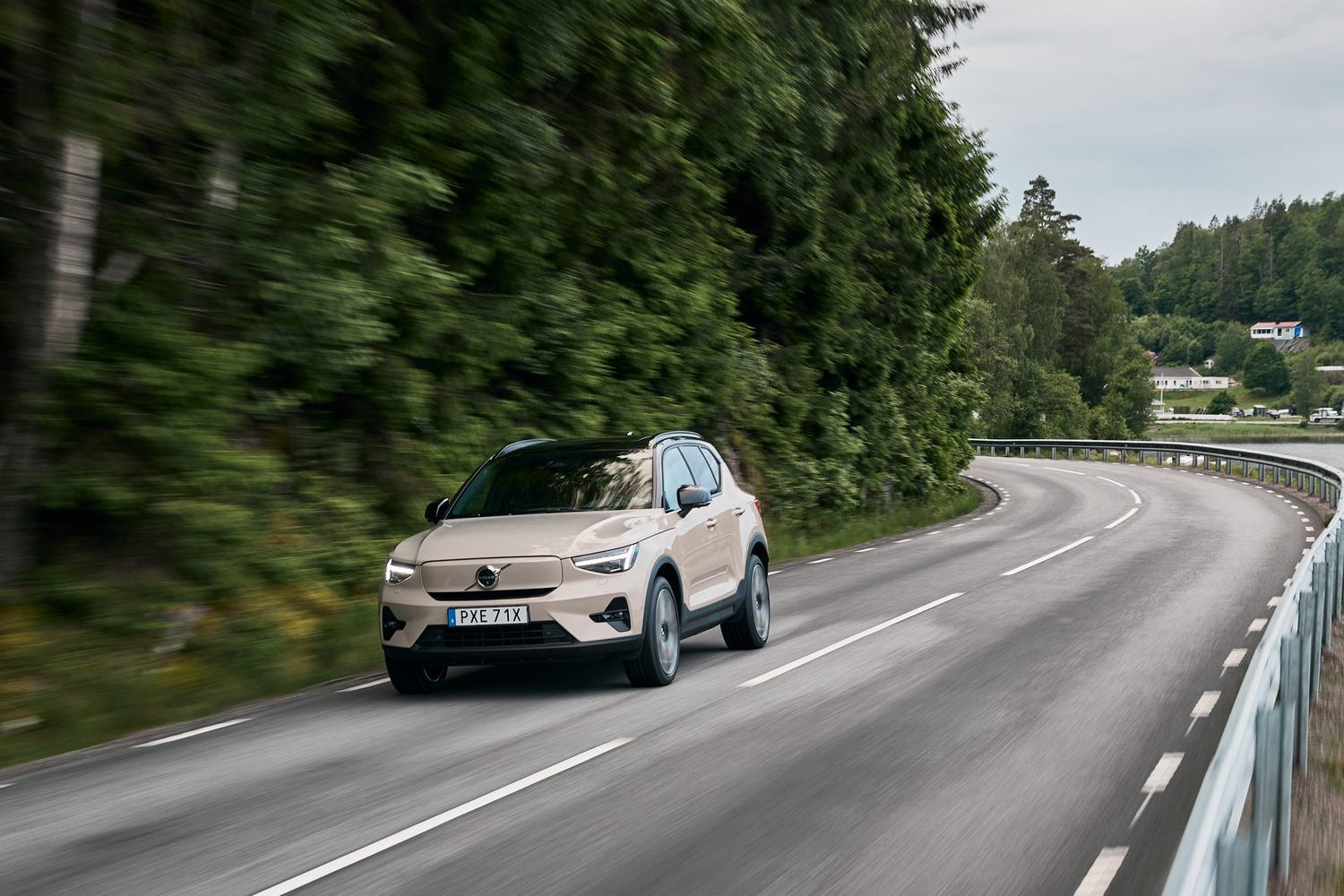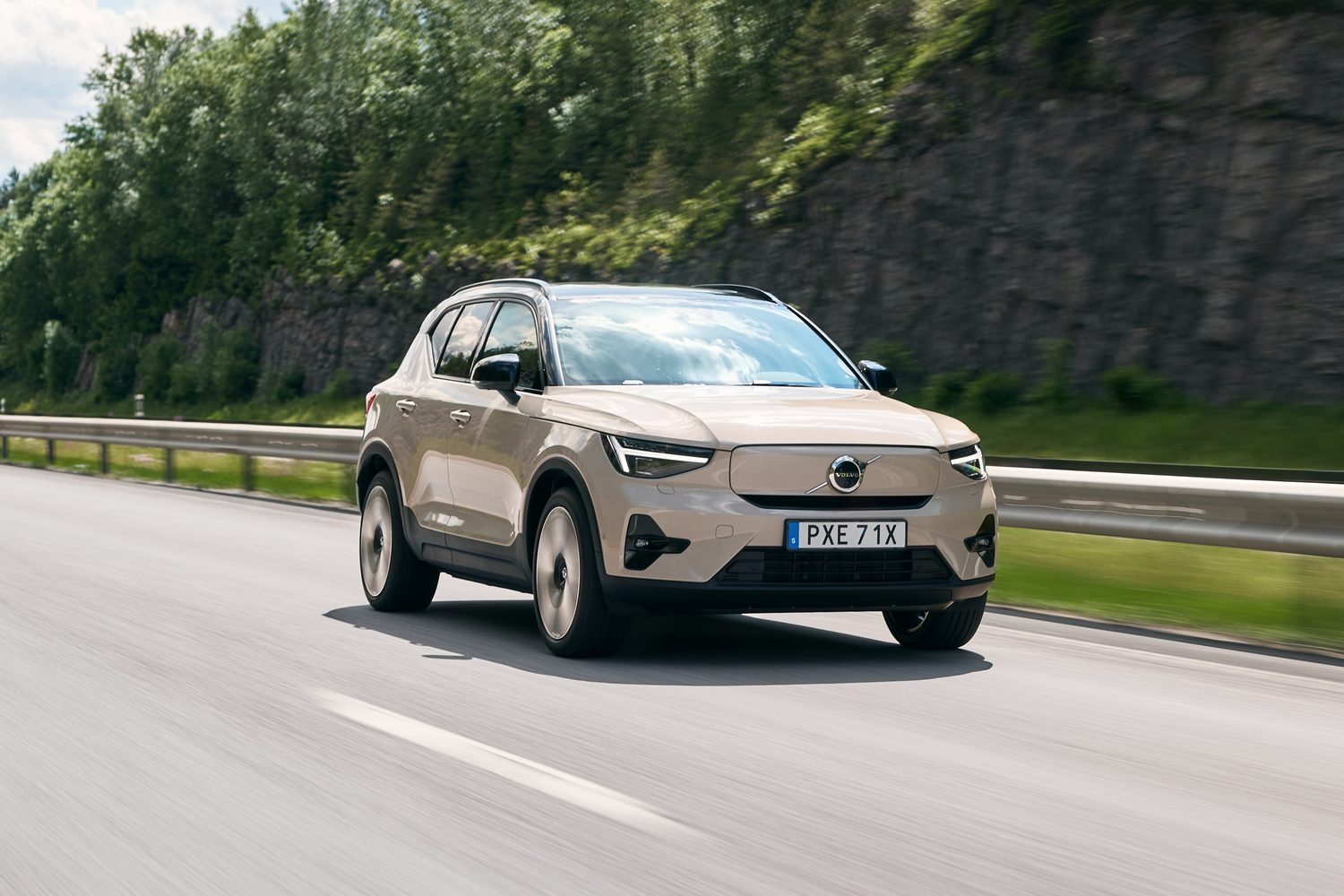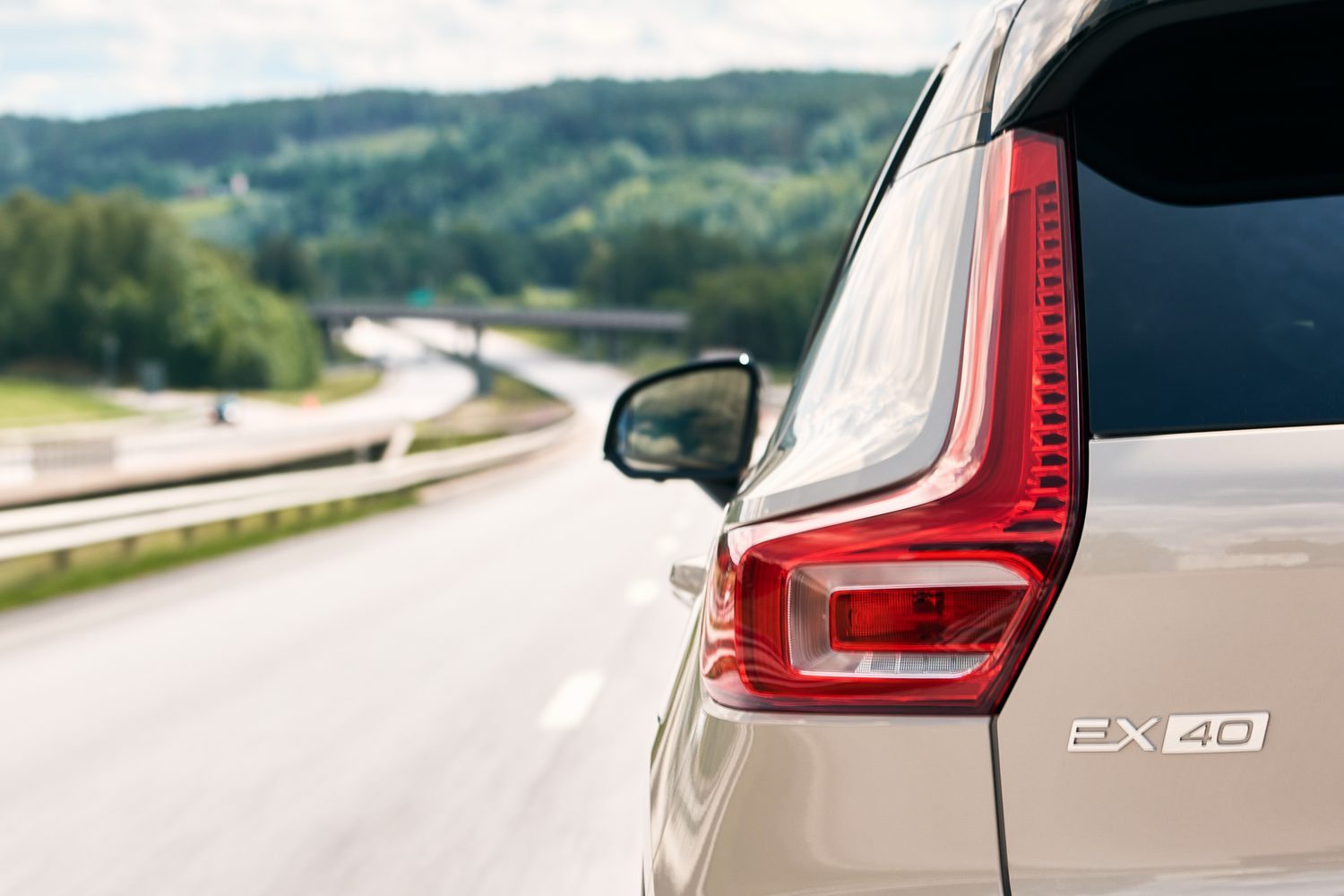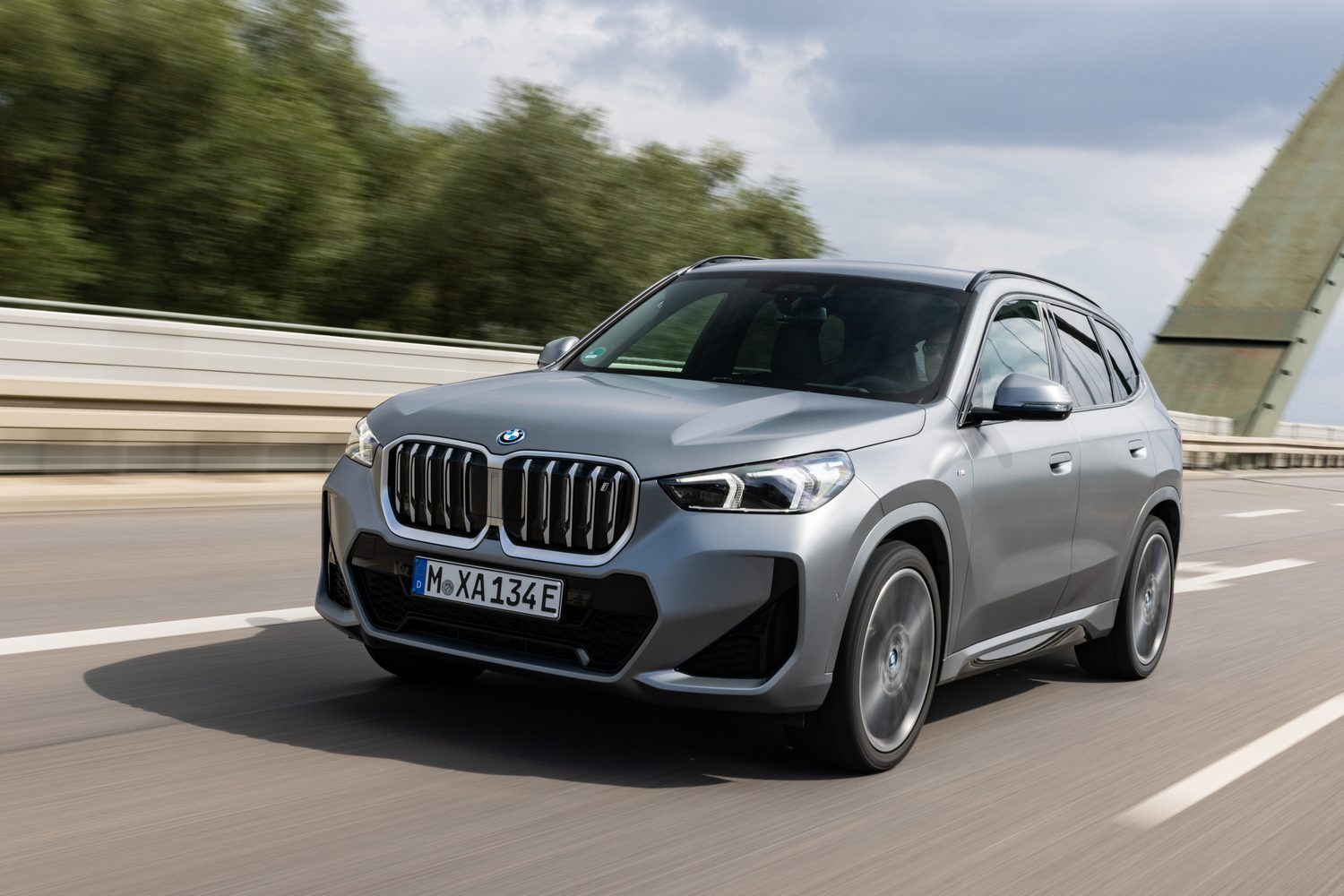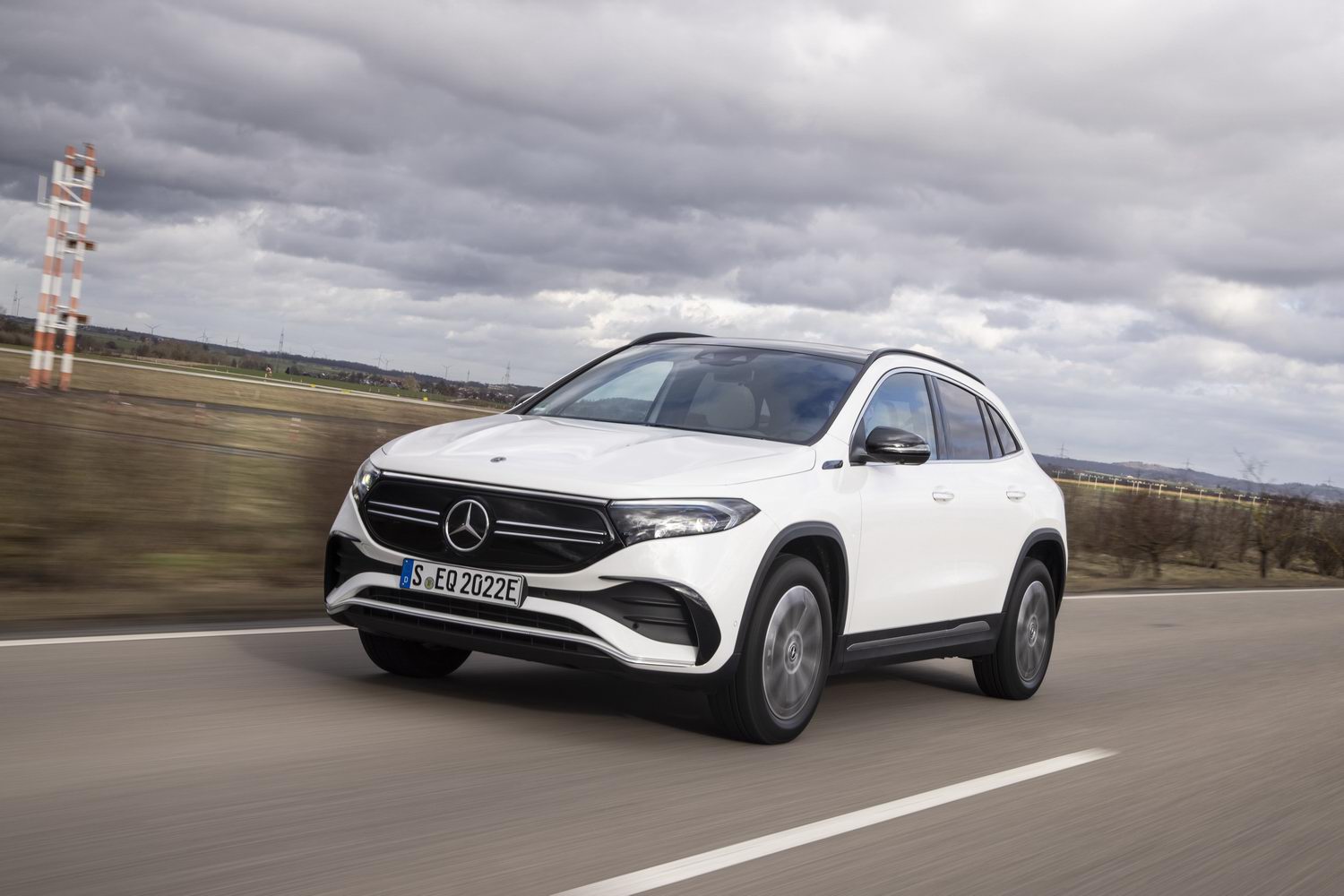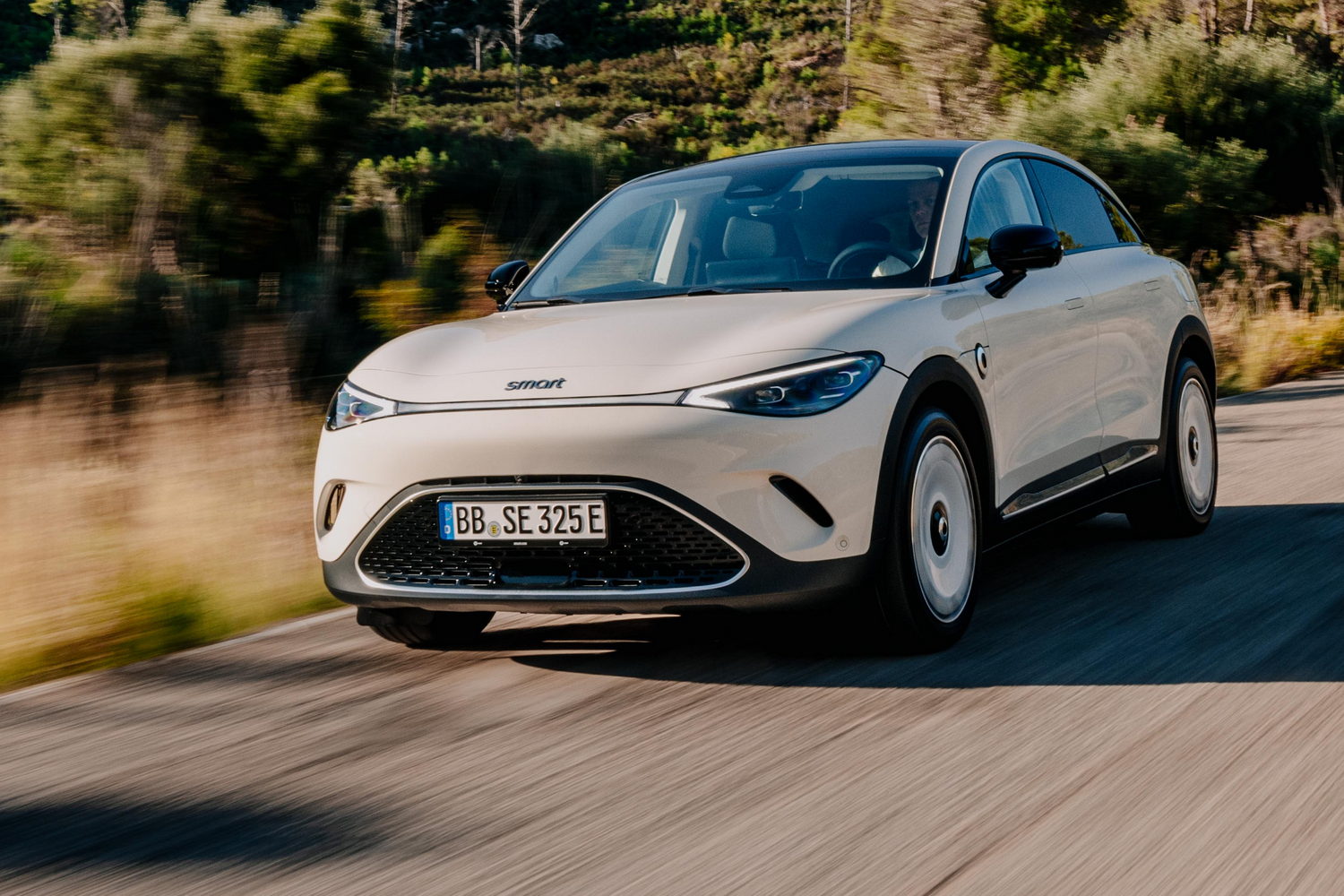Volvo is shifting away from combustion-engined cars to become the first premium brand to offer an electric-only range by 2030, and in preparation it is altering the naming system for its models. Volvo’s compact SUV has been known as the XC40, but now that’s changing to ‘EX40’. The company is also dropping the ‘Recharge’ element of its badge as, in the company’s view, electric cars no longer need differentiation.
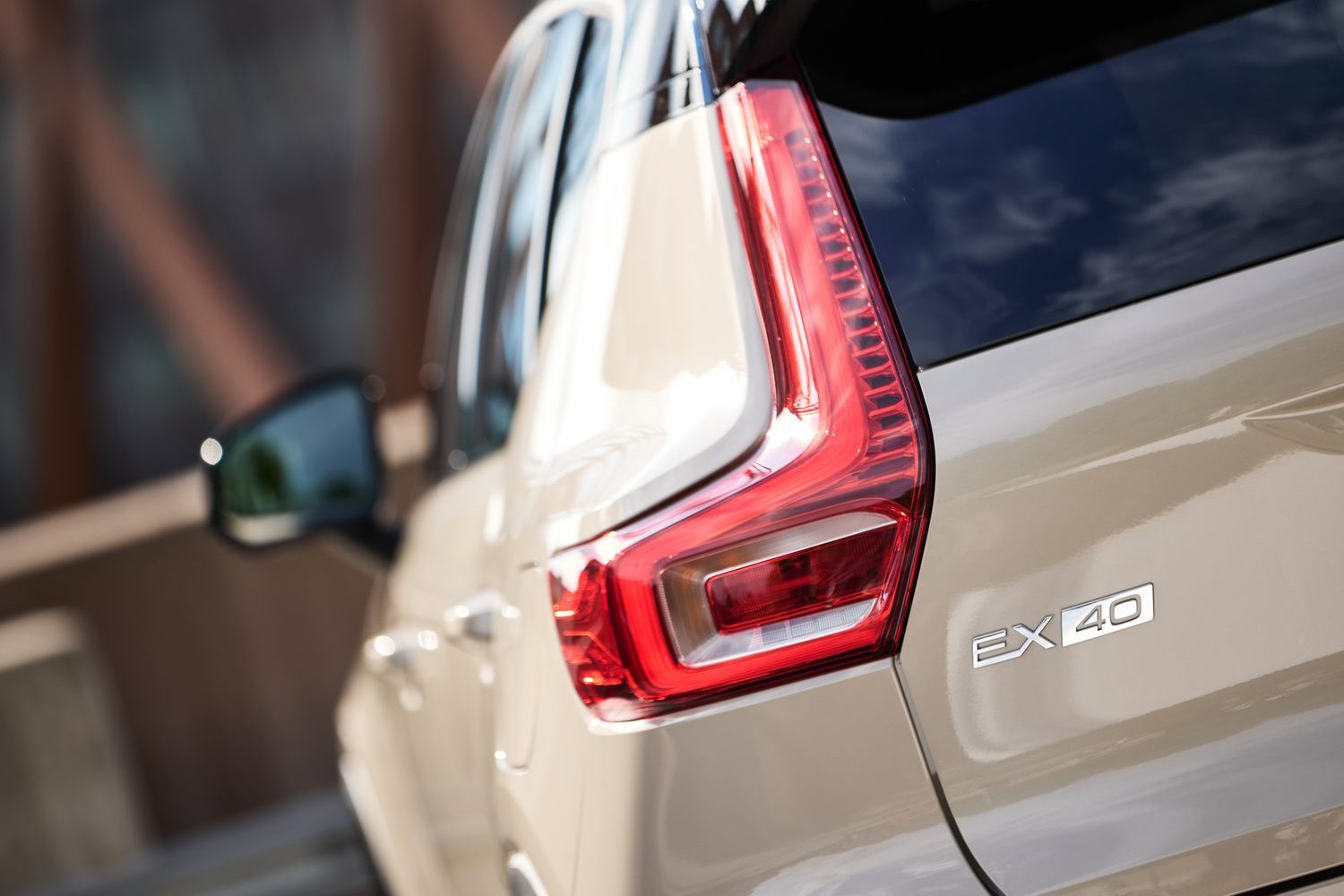
The EX40 doesn’t receive any visual changes to the XC40 it supersedes, other than the badge on the back of course, but Volvo is using the changeover as an opportunity to introduce a new exterior colour called Sand Dune, seen here in this review. While the EX40 hasn’t changed much, the segment it occupies and the cars it competes against are constantly evolving. With that in mind, we got behind the wheel of the EX40 in its native Gothenburg to see how it stacks up
against the competition.
A look inside the Volvo EX40
There’s a tasteful simplicity to the look and layout of the EX40’s cabin, though it is a car that’s now starting to show its age when compared to the interiors offered by newer rivals. It has an ordered structure to its layout, with slender vertical air vents on the far corners of the dashboard and framing the centre console’s nine-inch touchscreen. Below is a single bank of physical controls, which includes a large rotary volume dial.
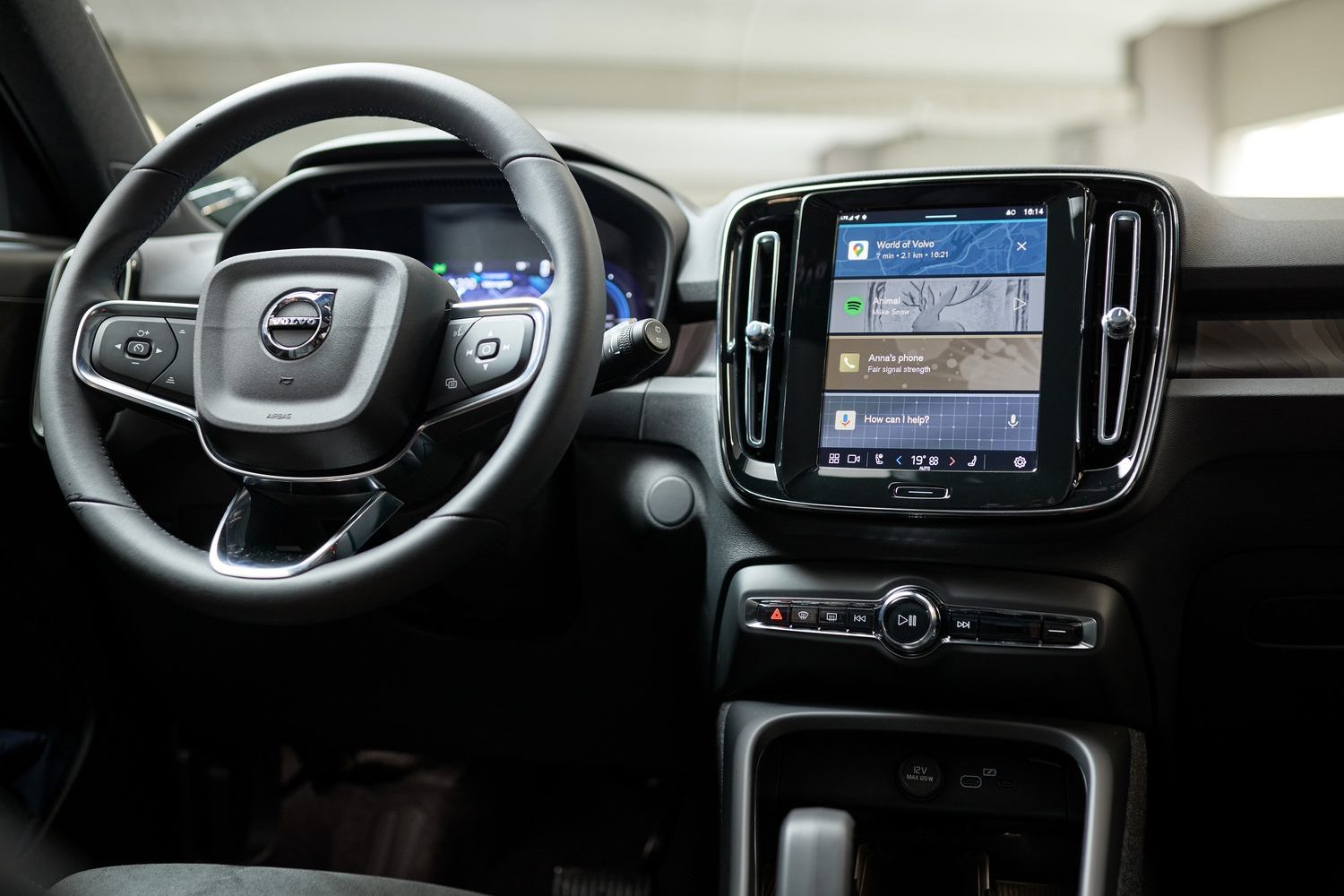
The quality of the materials used throughout the cabin is good and there are sustainable and recycled options. We’d like it if there was a bit more colour used to help brighten up what is a conservatively styled space. One nice touch is the inlay on the dashboard fascia, which has a pattern based on the topography of one of Sweden’s national parks. It’s not immediately obvious, but once you know it, you’ll be able to impress all your passengers with that detail.
On the practical side, the centre console’s base has an open storage area in addition to a pair of cupholders next to the drive selector. Behind that is a nifty bin complete with a lid that is helpful for keeping the cabin tidy from sweet wrappers etc. and it can be lifted out and emptied after your journey. Beneath the central armrest is more storage, while the door bins are large enough to accommodate large drinks bottles.
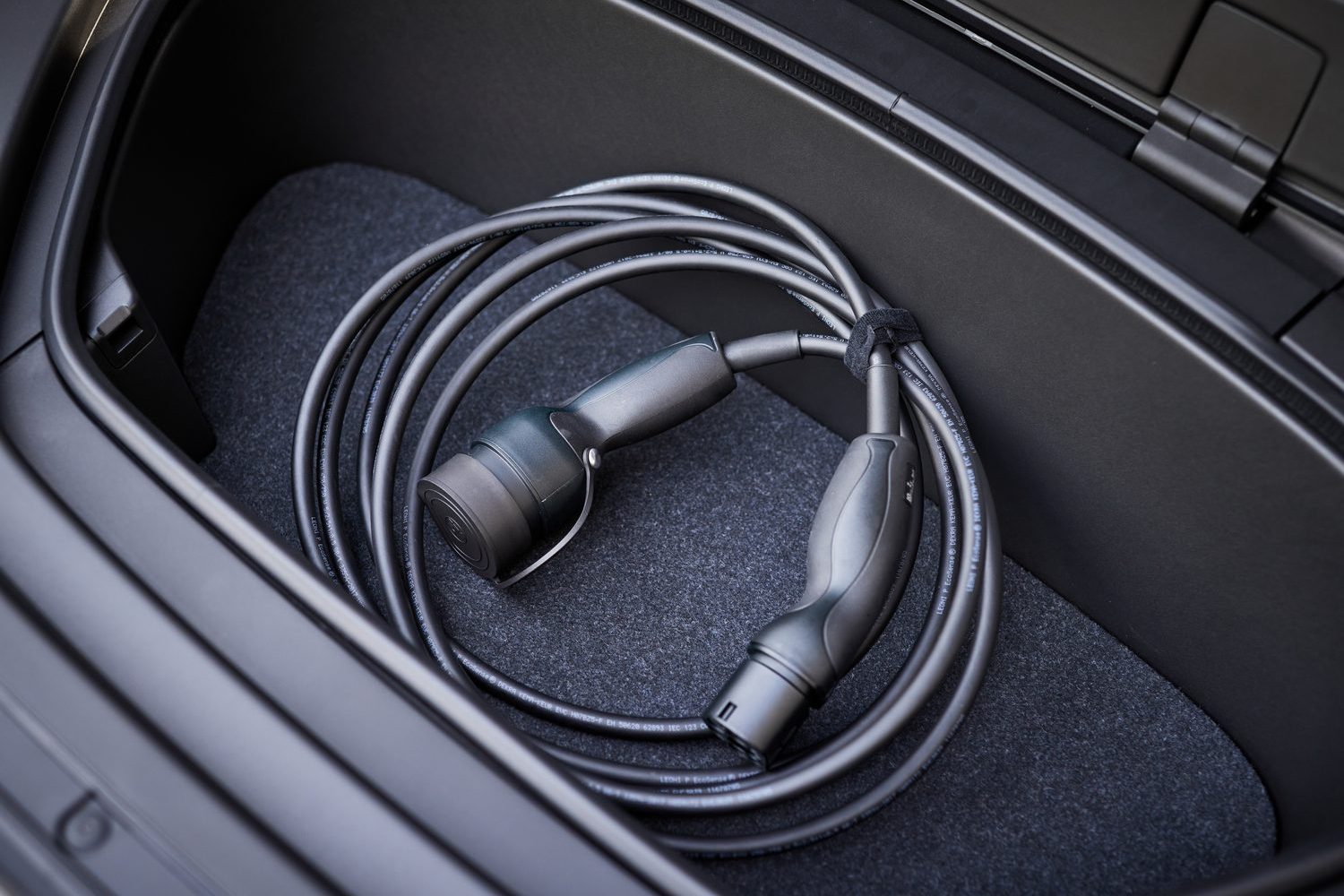
There’s a reasonable level of space for passengers in the rear seats, but the EX40 is better suited to accommodating two adults in the back rather than three, as the middle seat isn’t as generously sized as the outer ones. When it comes to boot space, the EX40 has a capacity of 410 litres, and this can be increased to 1,286 litres by folding down the rear seats, which is an easy task. Pull a release in the driver’s footwell to open the bonnet and you’ll discover an extra 31-litre stowage bin that’s handy for keeping charging cables in rather than the boot.
How many child seats can I fit in the Volvo EX40?
The Volvo EX40 is equipped with ISOFIX locations in the two outer rear seats and accessing them is quite easy thanks to a generously-sized door opening. The front passenger airbag can also be disabled so that a child seat can be fitted if required. The EX40’s boot isn’t huge, but should easily accommodate a large folded buggy. For added convenience, all EX40 models are equipped with an electrically operated tailgate.
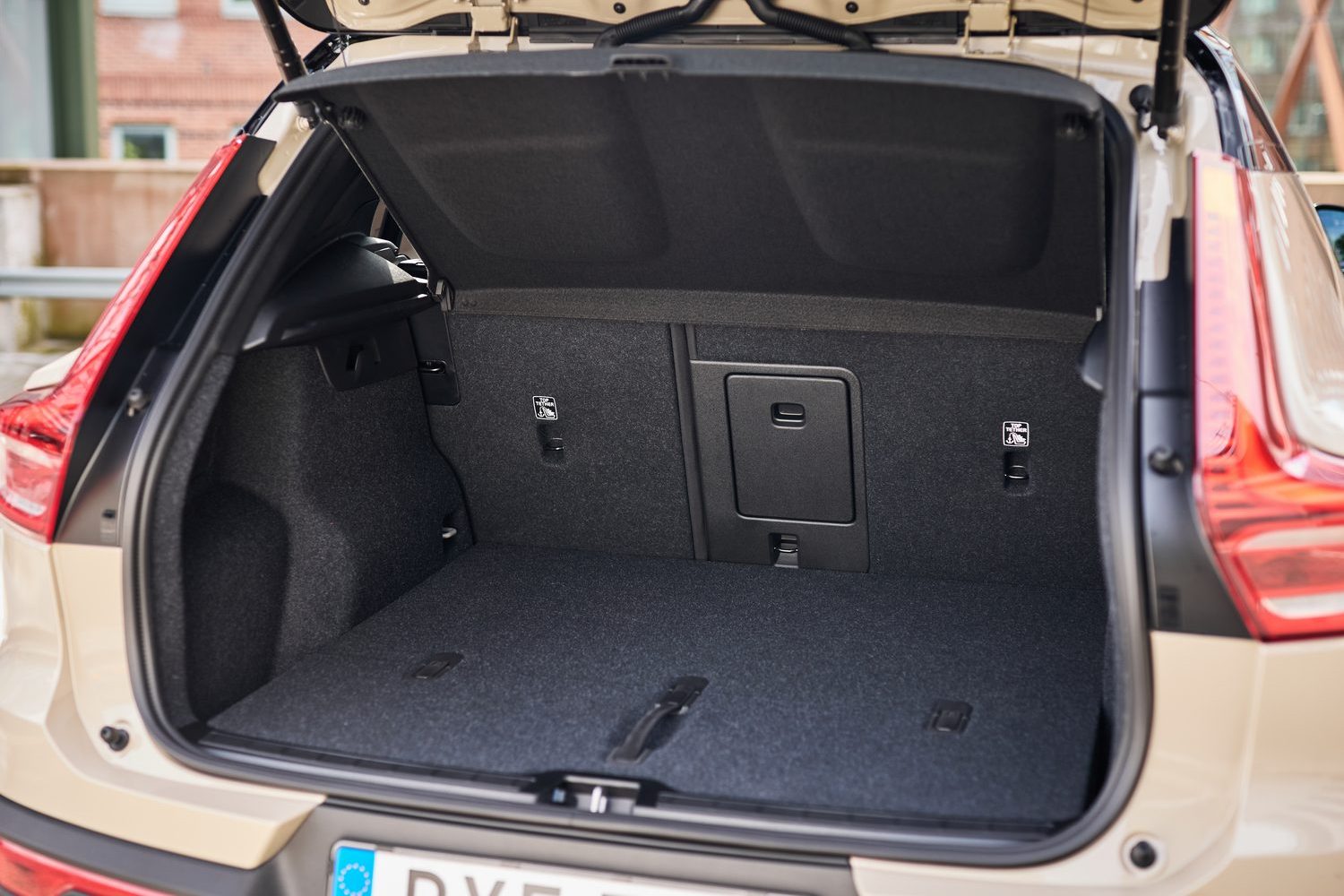
The EX40’s on-board technology
Inside the Volvo, it’s a mostly digital experience, starting with a 10.25-inch instrument display. The look and layout of this are kept intentionally simple so as not to be distracting, making it easy to glean all the relevant information from it at a glance. The buttons on the three-spoke steering wheel control this display.
At nine inches across the diagonal, the EX40’s portrait touchscreen is small by today’s standards. Nevertheless, the screen reacts quickly to inputs, and the native infotainment system is simple to learn your way around.
A massive benefit is that the EX40 comes with built-in Google services, and all new cars come with a four-year data connection package. Even if you’re not heavily invested in using all of Google’s apps and systems in your day-to-day life, using Google Maps for navigation is a highlight. We especially like how the Google Maps software will give you the best route to your destination, including taking local traffic into account, and accurately show you how much battery charge the car will have remaining once you arrive. That can be crucial for deciding on charging stops during a journey or before you set off on the next stage.
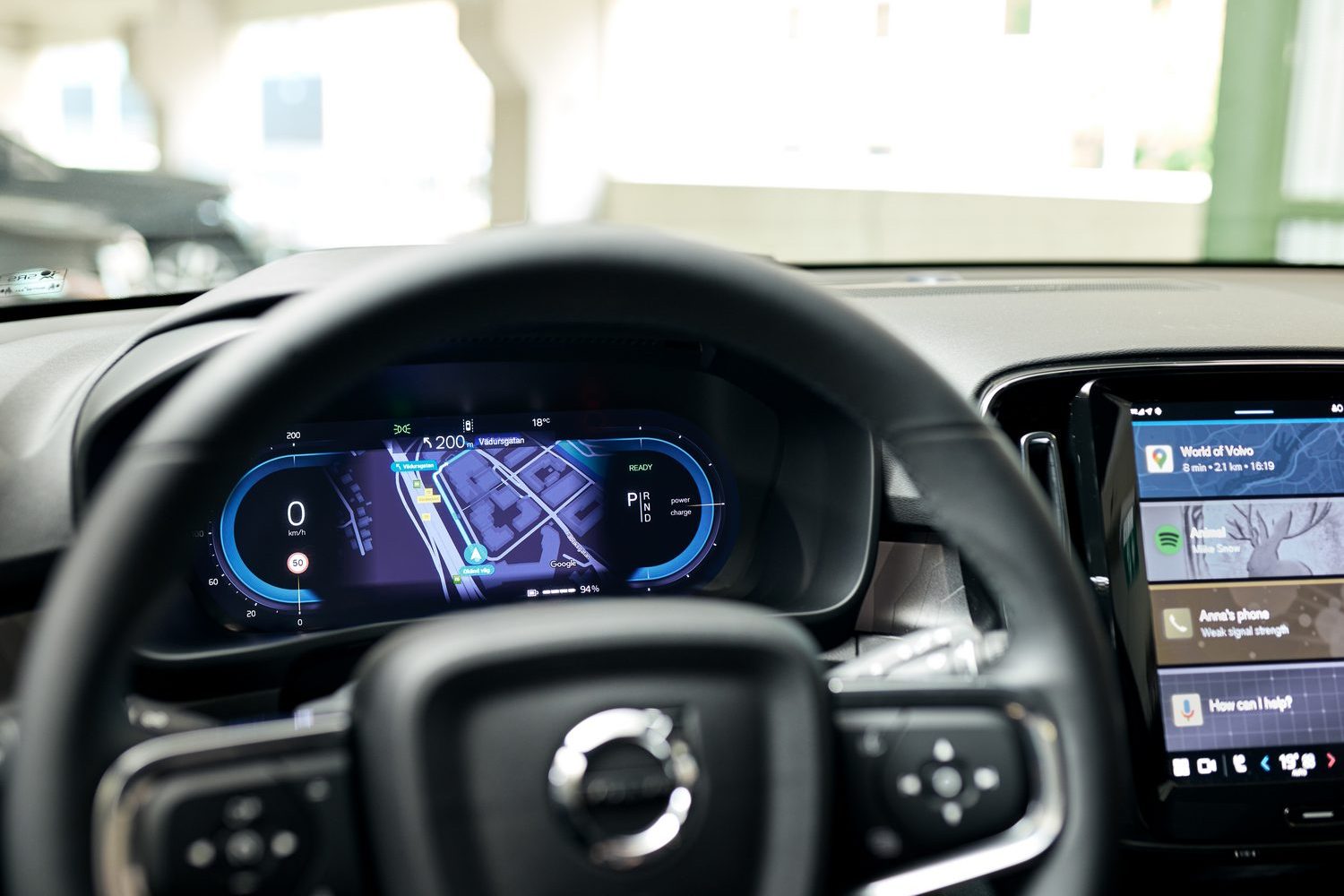
Android Auto and Apple CarPlay smartphone mirroring are available, and there are two USB-C charge ports in the front and another two in the rear, plus a wireless charging pad in the centre console. Volvo also has a native app that allows owners to remotely access several functions, including vehicle preconditioning by warming or cooling the interior before you get into the car, sending a destination to the car’s navigation so it’s already set when you begin your journey and remote locking and unlocking.
Along with the latest battery technology, the EX40 is equipped with a maximum DC charging rate of 200kW, which enables a 10 to 80 per cent recharge in as little as 28 minutes, providing you have a powerful enough charger. A full charge on an 11kW AC charger will take approximately eight hours, but as most domestic wall box chargers are rated at 7.4kW, a full charge at home will take longer.
Driving the Volvo EX40
Everything about driving the Volvo EX40 is easy. The car is on and ready to go as soon as you sit in the comfortable driver’s seat. Just pull the selector into drive and begin your journey. You only need the lightest of touches on the accelerator pedal to get the 185kW (252hp) motor on the rear axle going. There’s an abundance of torque on hand - up to 420Nm of the stuff - and it always feels like there is lots left in reserve. In everyday scenarios, it feels as if you’re only ever using five or ten per cent of the readily available performance.
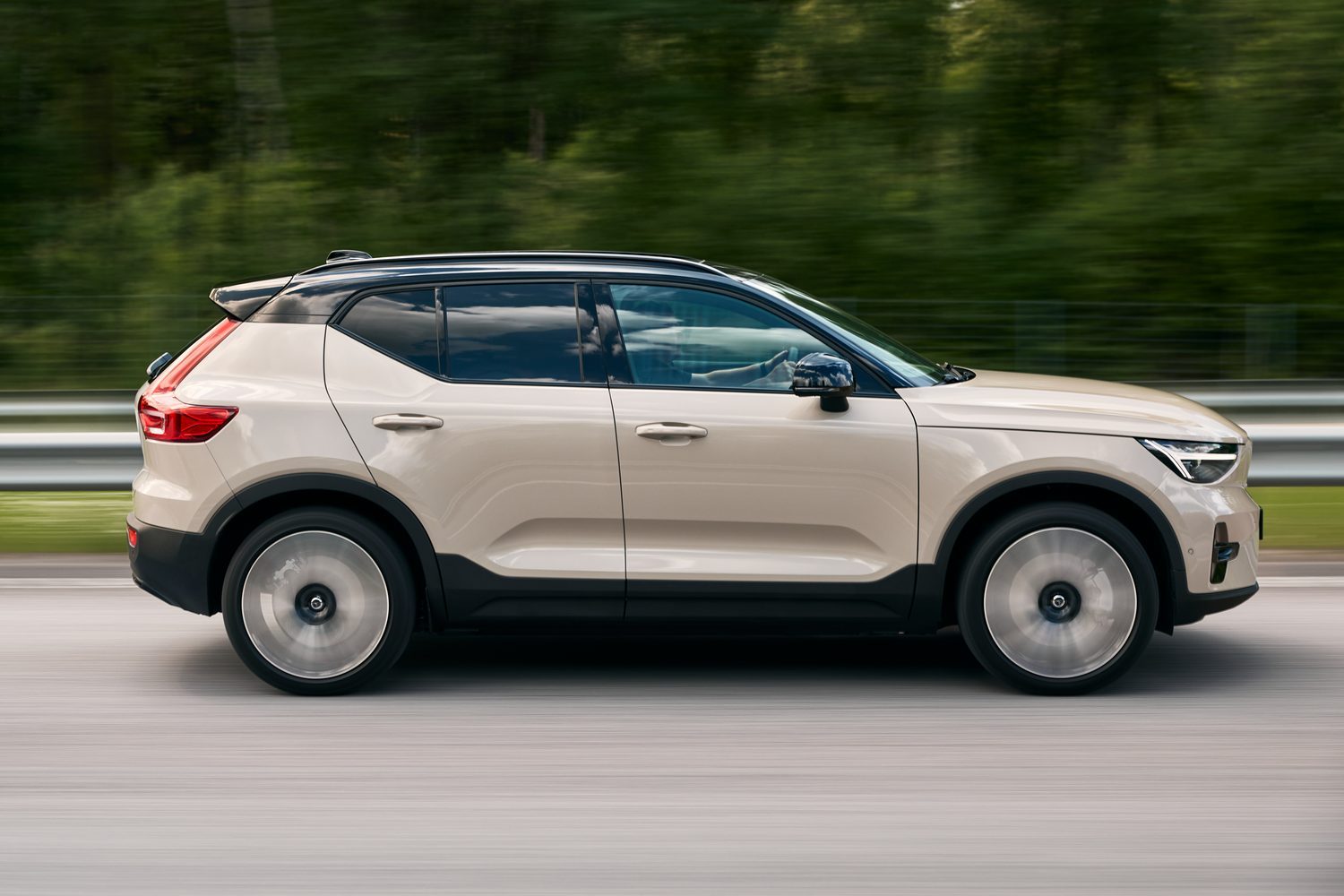
Pulling on the drive selector one more time moves the transmission into its ‘B’ mode, increasing the energy recuperation level whereby the electric motor acts as a generator to charge the battery as it slows the car down. In the Volvo, this is quite strong in terms of deceleration force compared to some rivals. It doesn’t take long to get used to it, and you can quickly and accurately gauge when to lift off the accelerator pedal in traffic to slow the car down sufficiently, making the Volvo one of the easiest cars to use one-pedal driving in.
The EX40 adheres to the latest GSR2 (General Safety Regulation) standard that requires all new cars in Europe to have their ADAS (Advanced Driver Assistance System) activated every time the car is started, and that includes an audible speed warning when the car detects it is travelling faster than the posted limit. In a bid to make these systems less annoying, Volvo has created a new feature called Adaptive Pedal Response, which adjusts the accelerator pedal sensitivity as you approach the posted speed.
For example, in an 80km/h zone, if you keep constant pressure on the accelerator, as the car reaches 76km/h, the rate of acceleration starts to tail off. It then attempts to keep the car at 80km/h and prevent you from accidentally creeping over the limit. Of course, drivers can override this at any time by applying more pressure to the accelerator pedal, but it’s a subtle and useful way to stay within the speed limit.
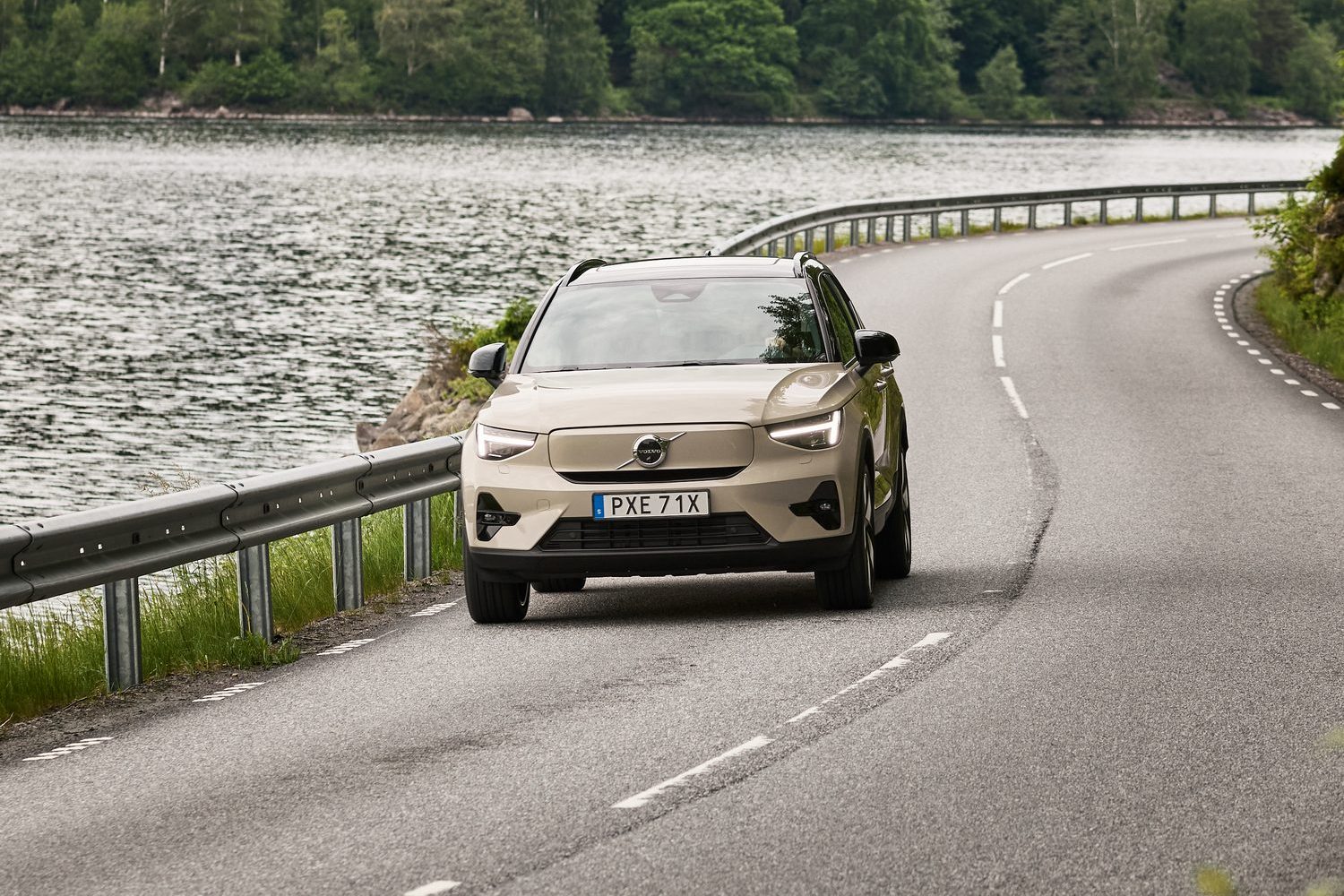
Beyond the safety-related features, the EX40 drives with quite a degree of sophistication. The suspension is on the firm side, though nicely damped, so it soaks up the bigger bumps without them jarring through the cabin. It handles sweetly through bends, as much of the Volvo’s mass is low down around the axle line. The steering response is quick, and as you turn into a bend, the suspension loads up progressively on the outer wheels. This setup gives the EX40 a very surefooted and planted feel when driving.
With power going to the rear wheels, you feel it propelling the car out of corners. The single motor’s 252hp is more than enough for a car of this size, especially given the instantaneous delivery of the ample torque. The Twin Motor version that gets a 408hp output feels like overkill in such a car, so unless you need the traction of all-wheel drive, the more affordable single-motor version has more than enough performance.
What’s the Volvo EX40’s range?
The official WLTP range for the Volvo EX40 Single Motor Extended Range is between 520 to 575 kilometres. How close you come to achieving those figures on a single charge will depend on your driving style and the situation, as in all cars. Officially, it consumes 16.8-17.3kWh/100km on the WLTP combined test. In our experience, it is possible to match those figures if you’re mostly driving at slow urban speeds, but if you’re driving over a more mixed route that will use more energy.
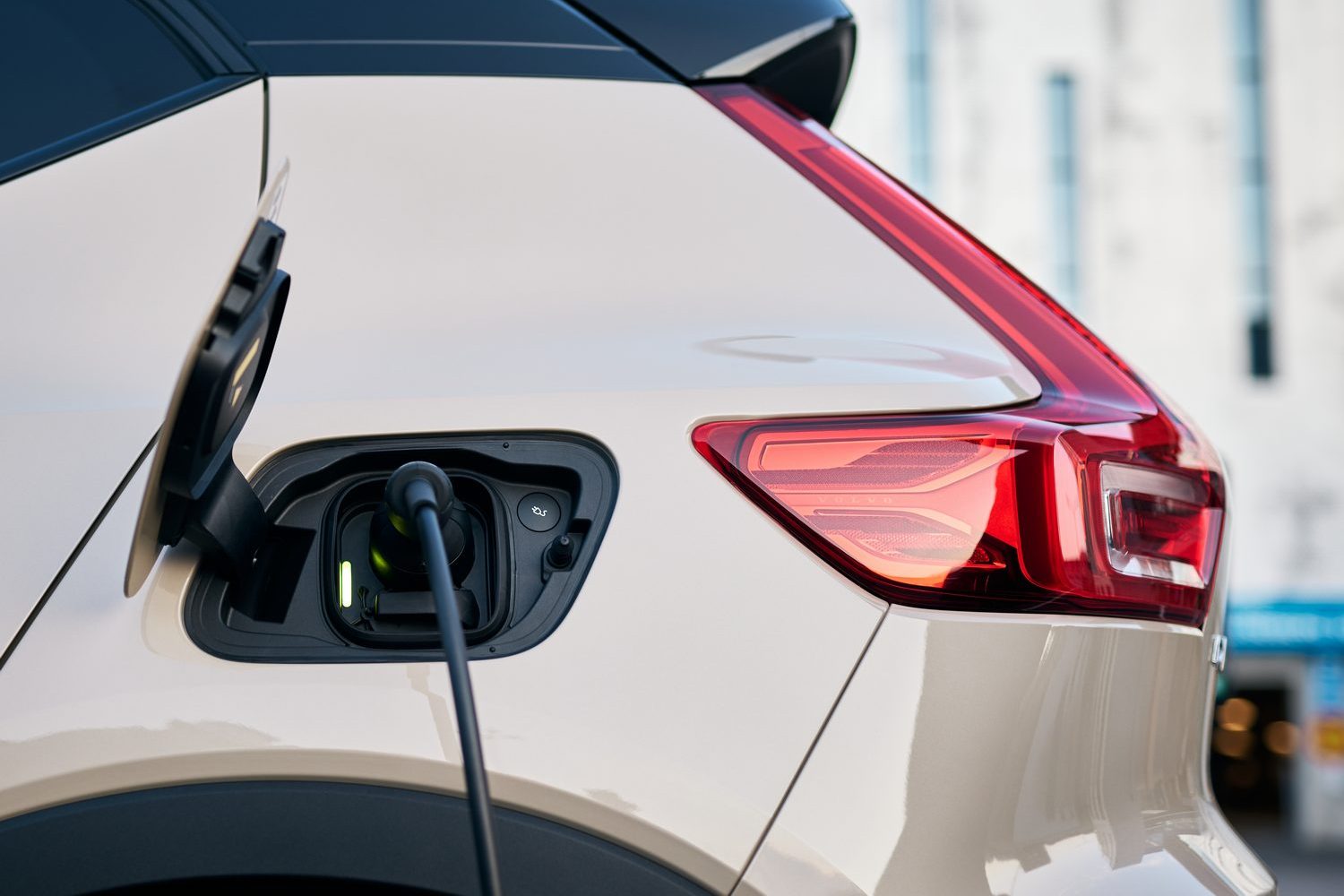
If you’re mostly going to be charging at home and have a favourable rate from your electricity supplier, then the EX40 should be quite economical to run. Being fully electric also means it is classed in the lowest motor tax band, which currently costs €120 per year.
How safe is the Volvo EX40?
When the Volvo XC40 (as it was called then) was launched, it was tested by Euro NCAP in 2018 and achieved a five-star rating, with strong results across all the different sections of the test. That is to be expected from a company such as Volvo, which takes the safety of its drivers, passengers, and other road users very seriously. In the intervening years since the car first debuted, Volvo has added more safety systems in keeping with the increased standards and legislative requirements in Europe.
Volvo only offers two specification levels, and both get the same safety features as standard, so you don’t miss out on any important equipment by choosing the lesser model.
That suite of safety equipment includes the City Safety pack with automatic emergency braking for forward collisions with further detection for cyclists and pedestrians; Driver Alert Control with Lane Keeping Aid; Oncoming Lane Mitigation; Run-off Road Mitigation; and Road Sign Information Display. In addition to dual-stage driver and passenger airbags, there is a driver knee airbag and full-length curtain airbags along the sides of the car.
How much is the Volvo EX40 in Ireland?
Pricing for the EX40 has yet to be announced, as the car will not be introduced to the Irish market until the third quarter of 2024. We don’t expect a significant shift from the current pricing structure of the electric XC40, which has a starting price of €59,250 for the 66kWh version. The XC40 Extended Range with Single Motor (similar to what’s tested here) costs €61,715 for the Plus version and €65,910 for the higher-spec Ultimate, for reference.
Dual-motor versions are also available. These have a higher power output of up to 408hp but shorter driving ranges of between 522 and 535 kilometres, depending on the equipment level. The outgoing XC40 is priced from €66,715 for the Plus and €70,910 for the Ultimate.
The reasons you’d buy a Volvo EX40
The combination of style and a certain sense of sophistication with a very refined electric driving experience makes the Volvo an attractive proposition. Even though the EX40 is a design that’s starting to get on in years, it still drives every bit as well as the latest electric cars coming onto the market. It’s also impossible to ignore the brand’s impressive reputation for safety, which will likely be a big priority for buyers with young families.
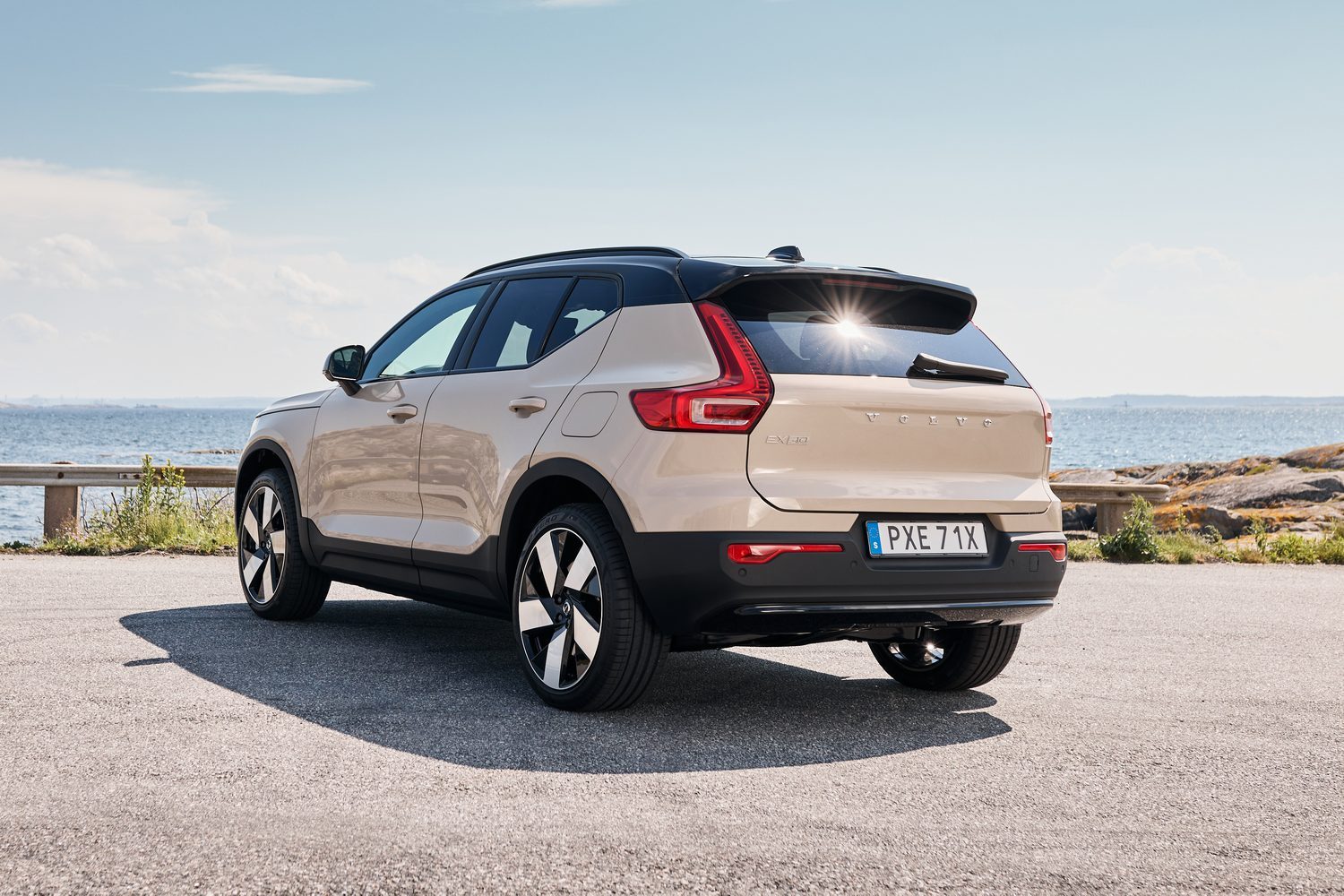
Ask us anything about the Volvo EX40
If there’s anything about the Volvo EX40 we’ve not covered, or you’d like advice in choosing between it and other cars, you can avail of our (completely free) expert advice service via the Ask Us Anything page. You can also read our previous reviews of the car by searching the site for the ‘XC40’, as other than the name change, it’s the same car.

